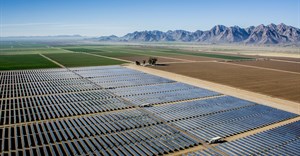
SA urgently needs to action its latest energy plan
Eskom's recent implementation of Stage 5 and 6 load shedding highlights the urgent need to execute the energy action plan outlined by government on 25 July.

Janice Foster, managing director: energy at Zutari
According to Janice Foster, managing director: energy at Zutari, the action plan announced by President Cyril Ramaphosa sent a strong and positive message to the market, industry and private investors looking to invest in renewable energy.
“What was great about the president’s speech was that he has opened the energy challenge to a shared solution with opportunities for everyone to have an impact, no matter how small,” says Foster.
Ramaphosa’s acknowledgement that the country faces an electricity shortage of 6,000MW “is important because a problem cannot be fixed until it is identified”, adds Foster.
While the large-scale renewable projects mooted are long-term interventions, Foster says she is optimistically confident that the action plan sets us up to make the right decisions and move us in the right direction. "However, for these to start having an impact, they need to be implemented with the utmost urgency,” she says.
Important moves by government
A highlight of the plan is doubling the new generation capacity for wind and solar power for Bid Window 6 of the Renewable Energy IPP Procurement Programme (REIPPPP) from 2,600MW to 5,200MW. The submission date of which has been extended to 3 October to allow for the registration of additional bidders.
Another significant step is removing the threshold for embedded generation capacity entirely. Raising the threshold to 100MW last year has already unlocked a pipeline of more than 80 confirmed private sector projects which are now starting to reach financial close. With a combined capacity of over 6,000MW, this is a significant increase in capacity for private off-takers, says Foster.
Preferred projects in Bid Window 5 are facing a number of obstacles to achieving financial close. “Therefore, a way to resolve the hurdles so that they can move forward into construction needs to be found,” she adds.
Another important move by government is the announcement of an Eskom feed-in tariff for small-scale embedded generation. “That is a real signal of incentive to Eskom’s commercial users and private residential customers that they can also contribute and support their own needs at the same time,” says Foster.
While municipalities like Cape Town are already forging ahead in this regard, it applies to utility customers at present.
Private sector participation
It is also positive that the government is reaching out to the private sector to assist with expertise and skills. “Yes, while there are consulting firms like us that can provide that support, there are also possibly a number of individuals who have left the industry entirely for whatever reason who can be attracted back and add value. I think it has definitely sent a message acknowledging the need for everyone to contribute in whatever way they can. It is a shared problem, so we can make it a shared solution,” says Foster.
The planned battery energy storage to supplement Eskom’s capacity represents a multifaceted approach to the energy crisis. “This opens up the energy storage market to private investment. The addition of battery energy storage systems (BESS) will support the grid by catering for peak shaving, providing network stability,” adds Foster. These systems will enable greater penetration of renewables into the future.
Ensuring a just energy transition
However, a just energy transition is probably the most important consideration from a local perspective. “The bulk of our power supply is still coal-based. As we transition away from fossil fuels, we need to ensure there are opportunities for participation of all stakeholders, especially the thousands employed in the coal-mining industry. Our energy crisis is a relatively solvable problem from a technical standpoint, but the number of social and institutional challenges it brings are equally, if not more, important,” stresses Foster.
“It is a global imperative for the world to reduce its reliance on carbon-intensive energy solutions. This is a problem likely to be with us for the foreseeable future. It is both an energy security challenge as well as the need to reduce the carbon footprint of our energy supply,” she concludes.

















